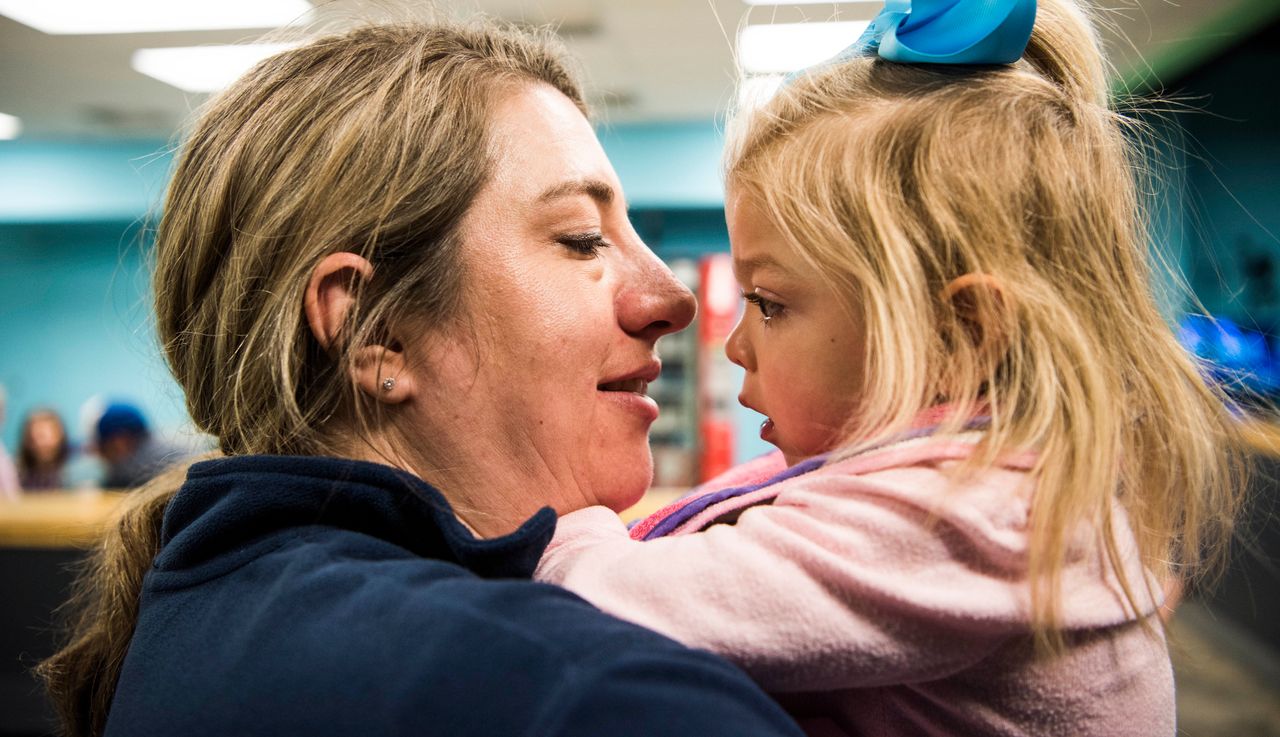OCEAN SPRINGS, Mississippi ― The school bus stop is a special hell for Amber Olsen.
Each weekday morning as she or her husband, Tom Cannan, wheels their youngest daughter, 5-year-old Willow, out to the end of their driveway, they’re reminded that this time two years ago, Willow could bound up and down the stairs of the bus herself.
This time 18 months ago, she could get on and off with some help from her sister Kylee.
Now, the automated wheelchair ramp gradually descends, grating ever so slightly as it hits the ground. Staffers get off the bus to make sure Willow is strapped in before she’s lifted off the ground, chair, medical equipment and all. No wave anymore, now that she can’t move her hands voluntarily.
Willow has an extremely rare genetic disorder, multiple sulfatase deficiency (MSD), that Amber often describes as a horrific combination of Alzheimer’s, muscular dystrophy and cystic fibrosis. Slowly but surely, her daughter has lost the ability to dance, walk and eat.
Amber estimates that about 100 children in the world currently have MSD. The disease kills most of its victims before their tenth birthday and there is no known treatment ― at least, not yet.
As she watches her daughter head off to kindergarten, Amber thinks about the $2.6 million she needs to raise, the scientists she has to fund, the lobbying of Congress she must do ― all to make sure that a gene therapy to halt the disease’s progress will be created in a ridiculously short time.
If she fails, MSD will steal her daughter’s life, too.
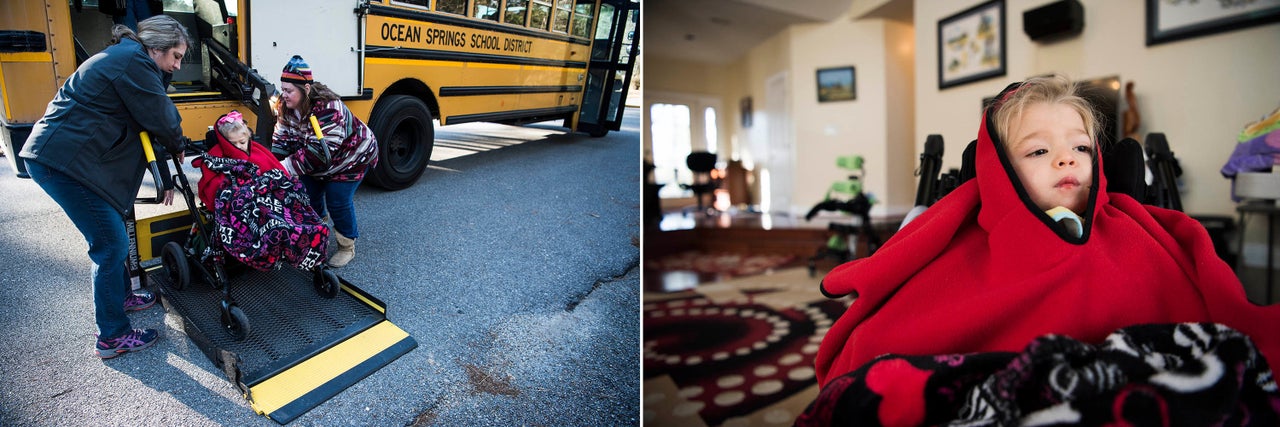
Approximately 10 percent of Americans ― up to about 30 million people ― are battling one of 7,000 such “rare diseases,” which Congress defined in the Orphan Drug Act of 1983 as a disease affecting fewer than 200,000 people. Half of them are children and some 4 million won’t live to see their fifth birthday. Only 5 percent of rare diseases ― 80 percent of which are genetic ― have any type of treatment approved by the Food and Drug Administration.
“There’s a black hole these kids are falling into,” Amber told HuffPost. “We want to save our children, but it’s virtually impossible to do.”
Amber resolved to do the impossible. Though she’d failed eighth-grade science ― she’d refused to dissect a frog ― in the days after her daughter’s diagnosis, she scoured the internet for the few references to MSD, bought Genetics for Dummies and turned to social media. Amber absorbed as much as she could, hiring a graduate student to explain papers too technical for a layperson to understand.
Through Facebook, she met Alan Finglas, the Irish founder of the first foundation aimed at curing MSD, whose son Dylan also has the disease. The two parents crashed a medical conference in the summer of 2016, where they met the Italian and German research physicians who identified the genetic mutation behind MSD 15 years ago. Inspired, she started her own nonprofit, the United MSD Foundation, in August 2016.
At the countless conferences that followed, Amber joined a community of self-described “fighter parents,” all of them racing against their own brutal clocks to save their kids. Through them, eventually, she was put in touch with Steven Gray, Ph.D., the medical researcher she believes can save her daughter ― if she can find the money, if he can execute the science and if they can make it happen in time.

Amber doesn’t sleep much.
The mother of three often wakes up at 3 a.m., running through an insurmountable to-do list: board meetings of her foundation; phone calls to the FDA; check-ins with Willow’s team of doctors, especially after her youngest daughter’s recent bouts of pneumonia. Meanwhile, Amber still has to recruit clients for the struggling staffing agency she owns, tend to her often-neglected 17-year marriage, push her middle daughter Jenna, who’s 12, to make friends at band camp while keeping Kylee, 15, off Instagram.
Everywhere you turn in their one-story home in Ocean Springs, Mississippi ― a seaside town just east of Biloxi ― you feel the presence of Willow’s disease. The first thing you see is a Bible verse over the fireplace: “Truly I tell you, if you have faith as small as a mustard seed, you can say to this mountain, ‘Move from here to there,’ and it will move. Nothing will be impossible for you.”
There’s a homemade wooden ramp for Willow’s wheelchair and a bouncy yellow therapy ball to stretch out her contracting muscles. A laundry basket for the 20-plus bibs that Willow, who can’t swallow and thus drools continuously, goes through each day. All the toddler-age toys waiting for Willow to be placed in front of them. And the unsigned “Do Not Resuscitate” paperwork buried in stacks of bills and insurance claims.
A nurse, Glenda Ball, comes five days a week, eight hours a day, to attend to Willow. She also steps in with support for Kylee and Jenna ― jokes, advice about boys and other life lessons. The girls ask if Miss Glenda is coming on family vacations.
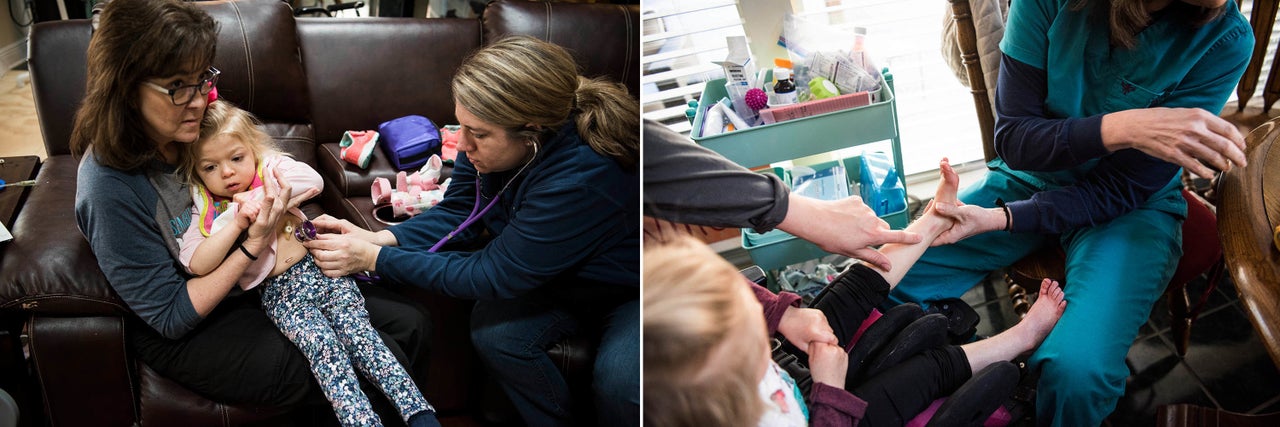
In the middle of the chaos sits Willow. She has lost nearly all of her voluntary movement. Now she’s mainly limited to shifting her head, jerking an arm toward her face and occasionally, in what feels like a small miracle, focusing on you with her big brown eyes and smiling. The 5-year-old, her hair often in a ponytail or pigtail with a big bow, is clearly happiest when people are engaging with her, which means holidays are her least favorite time of year. Over Christmas and Easter, Amber said, she dwindles away because she’s not with other kids at school.
“She likes people so much. So when she’s home for a long time, she gets kinda depressed,” Amber said.
But it’s getting harder and harder for Willow to interact with people, as even her ability to smile and to laugh is fading away.
“She’s going dark,” Amber said. “It’s horrific really, especially the fact we could be doing something about it. I mean we are doing something about it, but at a snail’s pace and I’m kicking and screaming the whole way.”
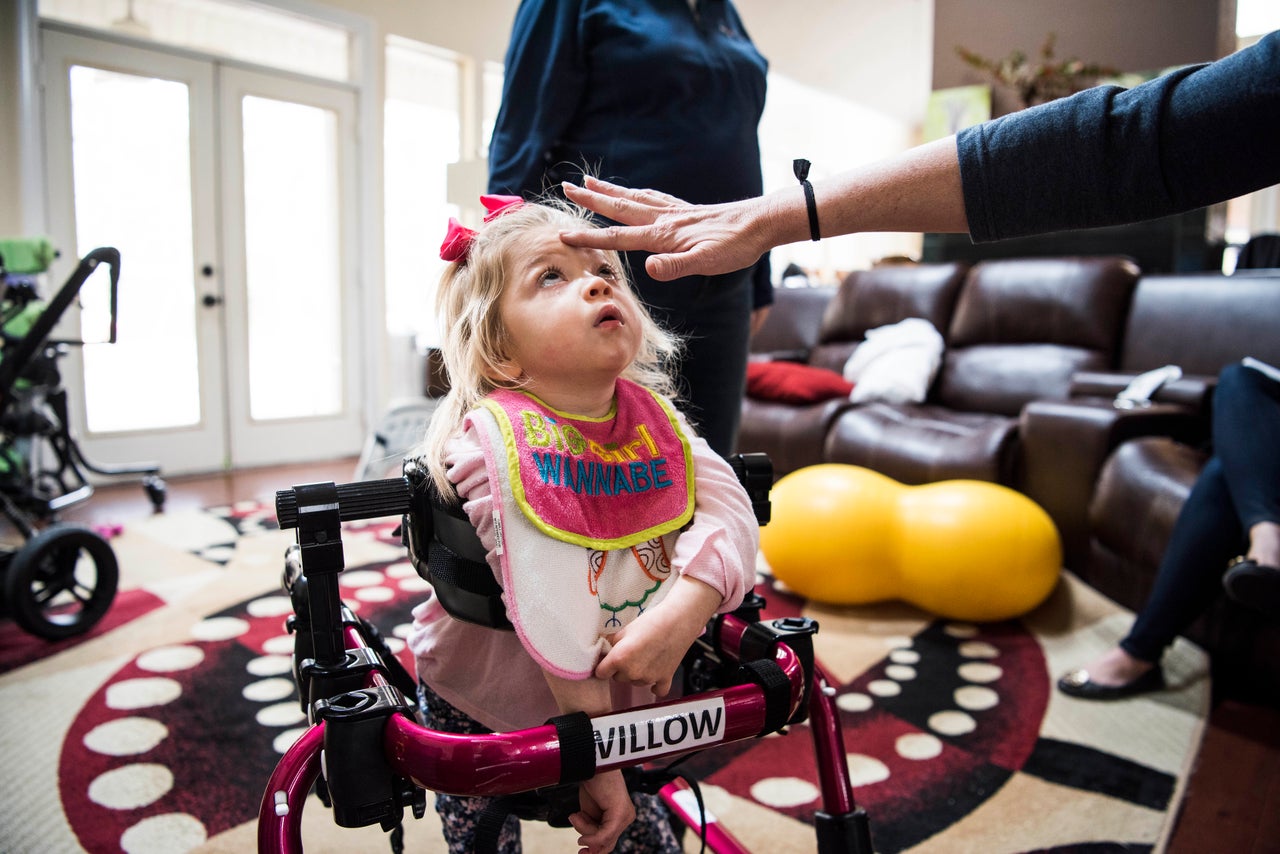
Amber and Tom had known something was wrong with their surprise third baby ― she was slower to reach developmental milestones, had frequent ear infections and had never talked ― but the news of her diagnosis with MSD on May 9, 2016, seemed beyond comprehension.
One gene mutation plus one gene deletion means Willow’s body is unable to break down toxic materials, hindered by an enzyme deficiency that undermines this metabolic process. As Amber describes it, the “garbage man” present in most people’s cells never shows up to take out Willow’s trash. White matter builds up in the brain and cellular trash builds up throughout the rest of the body, inexorably suffocating the cells, destroying neurological and bodily functions, leaving MSD patients unable to walk or talk ― and eventually unable to swallow or breathe on their own.
When Willow was diagnosed, the doctors told her parents there was no treatment or cure for this fatal disease ― there was nothing at all they could do besides give their daughter palliative care as she slowly lost all of her faculties.
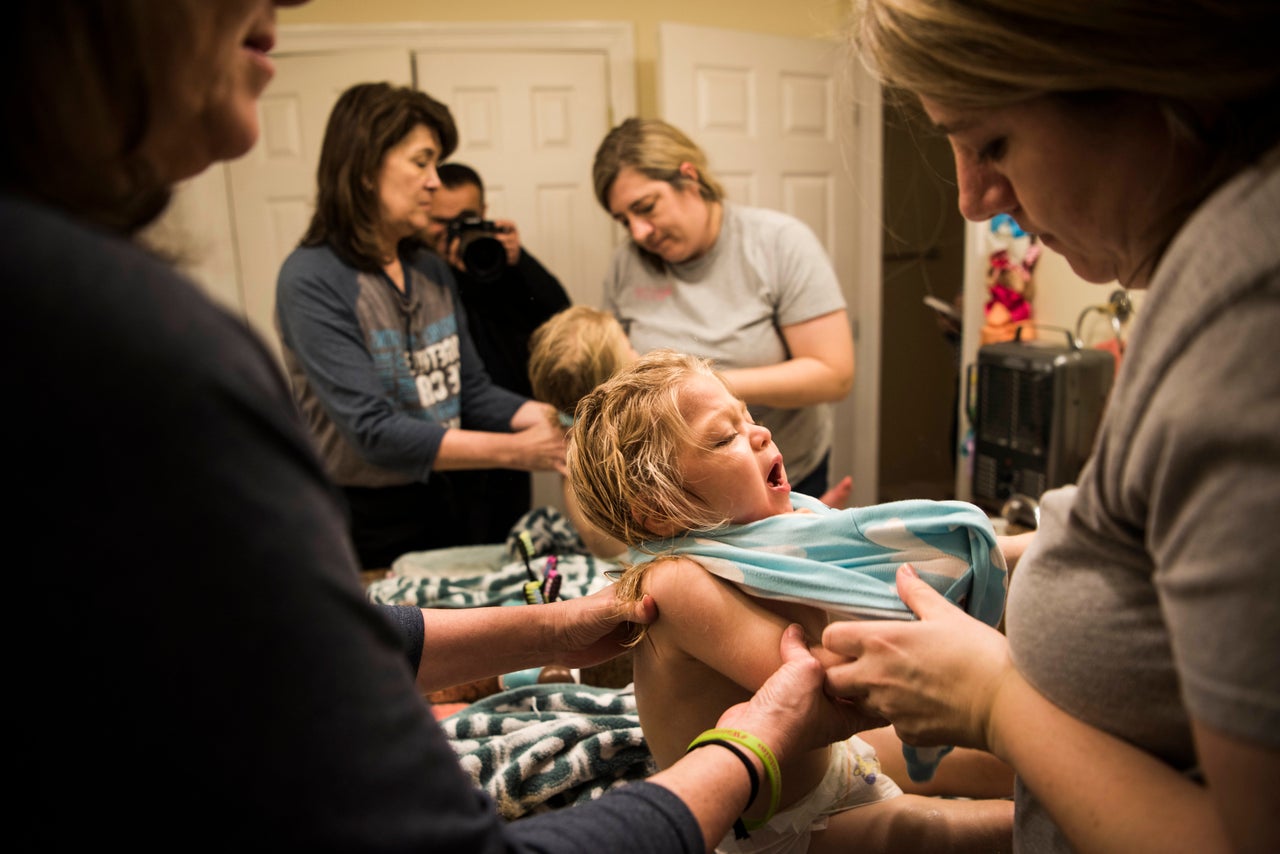
But that might not have been entirely true. Over the last few years, the field of gene therapy has started to offer parents like Amber and Tom some hope ― albeit at an enormous cost, both financially and personally. Amber said that Matt Might ― a fighter dad whose efforts to draw attention to his son’s rare disease have gained viral success ― told her you have to be crazy or really rich to pursue gene therapy.
The potential exists to treat the genetic flaws behind an endless array of diseases with edited DNA. The Massachusetts Institute of Technology called 2017 the “year of gene-therapy breakthroughs,” and while estimates vary wildly, the market for such personalized gene treatments is expected to explode in the next decade. Last year, the FDA approved Luxturna, which cures a genetic form of blindness, as the first gene therapy for an “inherited disease.” Over 2,500 clinical trials using gene therapy are now in progress.
“In a five-year timespan, all of the sudden everyone woke up and said we can actually treat diseases like this,” said Gray, Amber’s great hope.
Gray is practically a god, albeit a kindly and unassuming one, among parents of kids with rare diseases. He developed a successful gene therapy for giant axonal neuropathy, another genetic disorder that kills children, and brought it to the clinical trial stage. And he did it with a burst of initial funding raised by Lori Sames, another fighter mom whose daughter had GAN. When Amber finally got a meeting with Gray, she sat in his office at the University of North Carolina and refused to leave without a commitment to help Willow.
A year and a half later, Gray is now at the University of Texas Southwestern Medical Center and on the cusp of creating a treatment for MSD kids that could go to clinical trial.
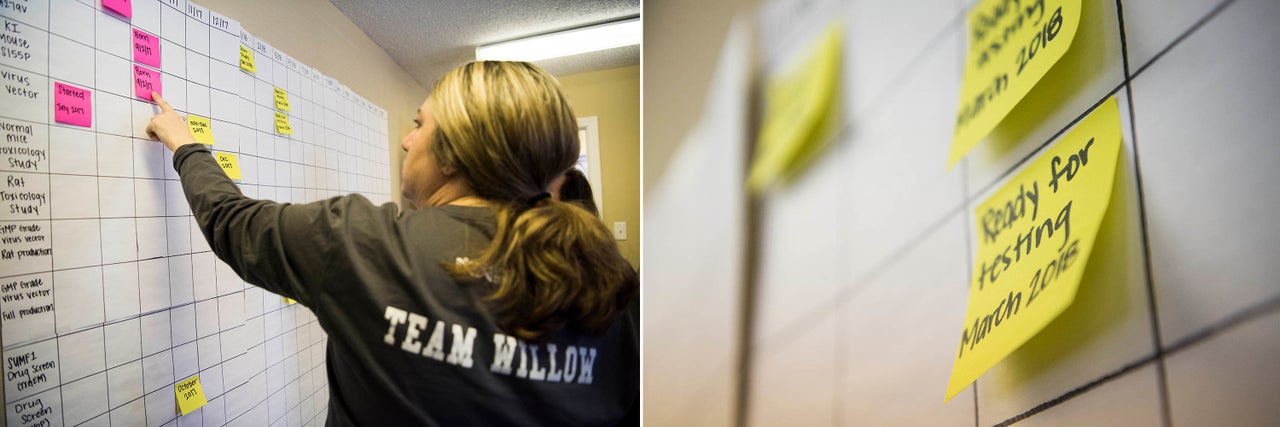
The treatment for MSD looks similar to the therapy Gray created for GAN. Each patient in the clinical trial would be injected with trillions of viruses ― about two teaspoons’ worth ― in what is called a virus vector. The viruses, which have been stripped of their own DNA, are essentially a delivery mechanism for the healthy genetic material that the MSD patients are missing.
If it works, the new genetic material will enable the patients’ cells from that point onward to start cleaning out the new cellular trash building up throughout their bodies. Gray has already begun testing some of the material in mice.
While this gene therapy won’t cure Willow or any other MSD patient (Gray said “cure” is a four-letter word in his book), it could halt the progression of the disease.
The downsides? Gene therapy is still an experimental exercise. Some patients may respond well while others don’t. Some may die. It is incredibly expensive due to the cutting-edge technology required to produce it. Just because scientists have developed gene therapies to treat some conditions, just because the FDA has approved some clinical trials for them, doesn’t mean a life-saving treatment can be whipped up overnight.
More pressing for Willow, there isn’t much money in therapies for those with most rare diseases ― much less an ultra-rare disease. Pharmaceutical companies have a problem recouping their costs when developing a treatment for mere thousands of people ― much less 10, 50 or 100 kids. To make the finances work, they’d need to charge hundreds of thousands of dollars for each child’s treatment. That would keep the therapy away from some who need it and lead to public outrage ― a public relations disaster.
Research scientists too can struggle to focus on rare disorders. It’s risky to spend years of a career on some disease that affects few people and that never generates the kind of acclaim, grants and publishing opportunities that work on more common ailments could garner. Top universities and research hospitals are looking for high-profile breakthroughs from their employees.
With the “current scientific reward structure, you’re fighting a losing battle,” said Sean Ekins, a prominent pharmacologist working to advance research into treatments for rare and infectious diseases. He’s also the man who introduced Amber to Gray.
So to combat the mismatch of scientific and pharmaceutical priorities, a growing number of fighter parents like Amber have taken it upon themselves to become the engine in this war. They’ve researched rare diseases, collected data from other families, recruited scientists, gone to medical conferences around the world and started funding scientists’ experimental treatments. They’ve labored to raise the millions of dollars needed to save their kids.
It’s easy to spot them at those conferences, at their congressional representatives’ offices, at 5K races and other community fundraising opportunities. They’ll be wearing T-shirts emblazoned with information about their child’s illness, speaking in medical jargon about research and clinical trials while trading advice on the latest social media strategies to draw the public’s attention.
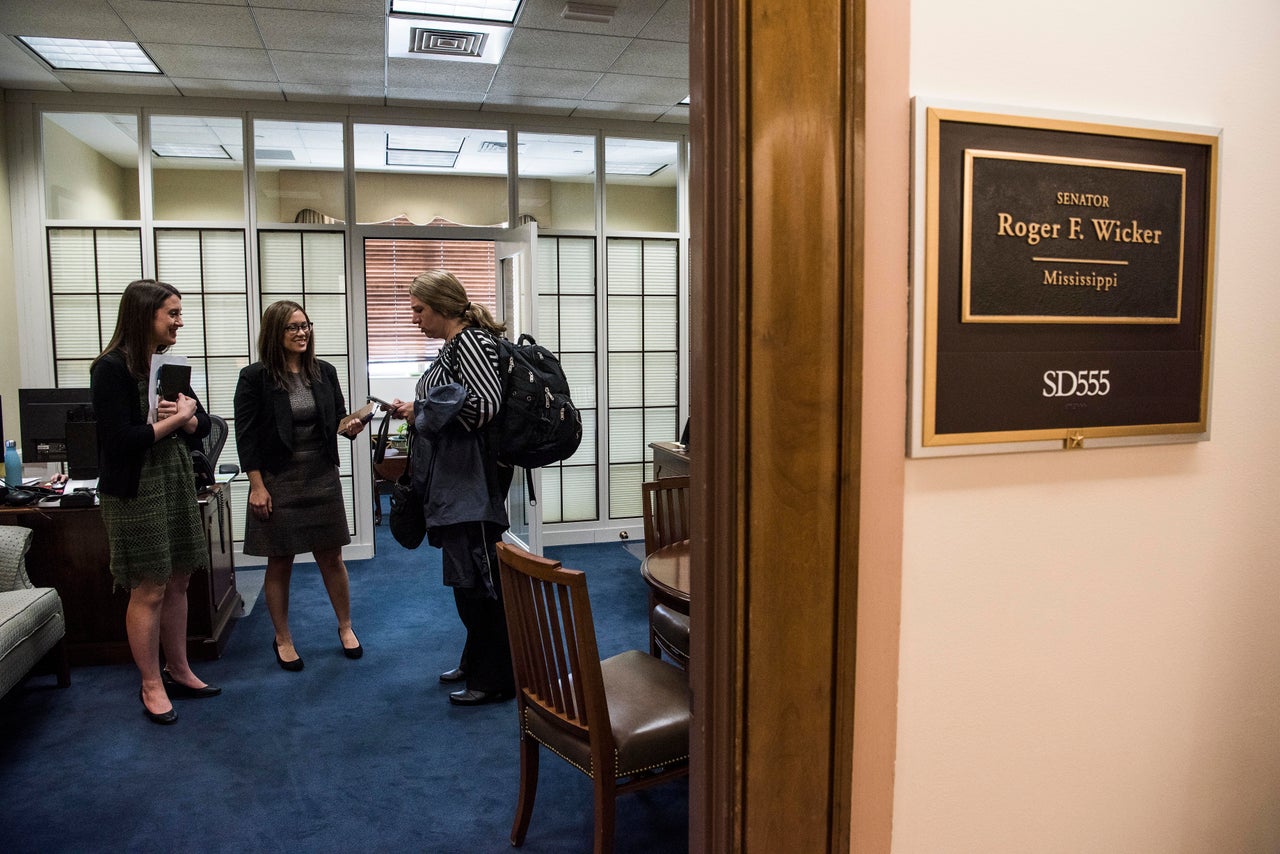
Even the medical and political establishment now acknowledges how central their role is. The National Institutes of Health has created a “toolkit” for rare disease parents with advice on how to start a foundation and drive funding and research. During Rare Disease Week, which has become an annual event, they descend on Washington to lobby for funding. When they arrived this February, Rep. Leonard Lance (R-N.J.), who is considered a champion for rare disease patients, told a room full of patient and parent advocates: “Based on your efforts, progress is made.”
That’s a lot of pressure to put on a bunch of ordinary moms and dads. Most parents of the estimated 15 million children with a rare genetic disease won’t be able to launch what is essentially a mini biotech venture capital firm ― or, put another way, an ad hoc American Cancer Society for their child’s disease. Most don’t have the time, the money or the ability to do so, said Ekins.
“It’s quite eye-opening in many ways to see what the [fighter parents] have to go through at the same time as caring for their own child,” Ekins said. “What they have to cope with ― and also how they have to try to do it all by themselves, literally building companies from the ground up to build a treatment themselves.”
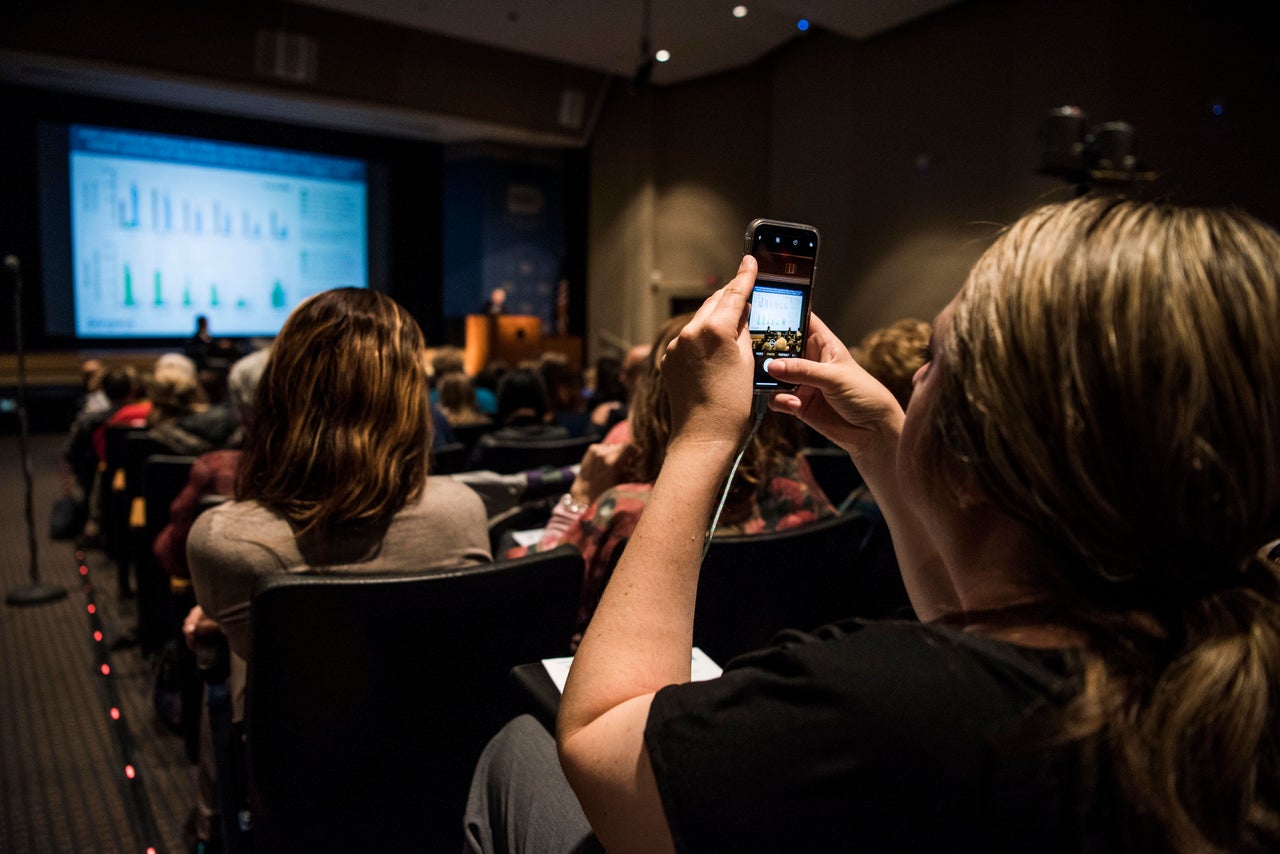
Jill Wood, whose son Jonah has Sanfilippo disease, a disorder similar to Willow’s, purchased sheep in New Zealand for scientists to do research on. Debi Houliares hates asking people for money, but managed to raise thousands through bar nights and motorcycle crawls in the fight against Charcot-Marie-Tooth disorder, all for her son Zach. Jen Sarkar, whose son Carter also has Sanfilippo disease, captured the attention of Hollywood’s elite with a viral video, raising a million dollars in a little over a month to fund an enzyme therapy clinical trial.
It’s no fun to be always asking for something, always reminding people that death is around the corner. Amber knows she sounds like a broken record – but she has to say something or no one will.
“I find myself in between shock and horror and fighting back tears, like I can’t do this, I’m in over my head,” Amber said. “Why does this mother of a sick child have to worry about this? But if she doesn’t, who will?”
So she puts on her “Cure MSD” T-shirt, pastes on a smile, goes to Rotary Club meetings, high schools and community colleges ― all with Willow in tow ― and explains over and over and over again that without help, without a treatment, without something Willow will die.
Love and determination and the ability to work through a stupefying level of exhaustion are not always enough. Sometimes these parents make fundraising mistakes that more seasoned professionals wouldn’t. Sometimes they get into fights with each other over funding priorities. Sometimes they pursue the wrong treatments. But without their efforts, there would be no movement at all.
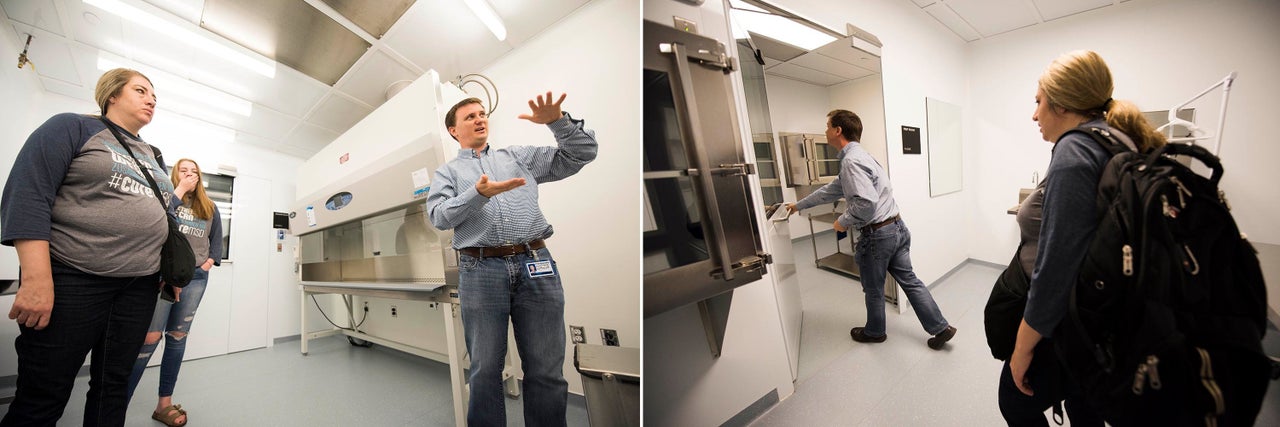
The UT Southwestern Medical Center is part of a nonprofit public university system, which means Gray will produce at cost the genetic material for clinical trials of gene therapies ― for those families that can fund it. With the MSD therapy, Gray estimates that “at cost” means another $1.6 million, on top of the hundreds of thousands already spent. But if Amber had gone to a private facility to develop the virus vector, he said the price would have been double. (Gray doesn’t run the clinical trials; Amber needs another million to pay for those.)
He said he’s working on 20 different kinds of rare diseases with about 20 families ― more folks reach out every day, and he has to turn them away ― and up to eight of those treatments are in the potential production phase.
In a walk-through of his new lab at UT Southwestern in March with Amber, Kylee and two journalists, Gray explained how the resources of this massive facility ― cutting-edge machines, safe rooms, researchers in containment suits ― will be used to make the two teaspoons of virus vector that may be injected into Willow.
The mice trials to test the virus vector have been going “exceptionally well … better than we could have hoped,” Gray tells Amber. The news ― and her resulting smile ― crack through her usual no-nonsense demeanor.
Yet after she navigates the maze of hospital buildings back to her car, Amber says she can barely focus. “It’s so much science my brain hurts ― it’s like learning a foreign language.”
Amber’s gratitude for Gray and UT Southwestern’s work is undercut by a slight wariness. Even if things miraculously go Willow’s way, it was clear as Amber looked around the lab in March that there was a lot of work still to be done.
“You know that every day matters,” Gray told HuffPost. “I’ve had to focus on hope ― there is a lot of hope, there’s a lot to be hopeful for ― but you see a lot of kids that you’re not fast enough for.”
Willow, who continues to deteriorate, and the other MSD kids may not even be first in line for one of Gray’s treatments. He can only produce the material for one gene therapy at a time. It’ll come down to a university committee decision, he said, on which disease gets treated first ― and who has the money to pay for it will be a factor.
“Some of it’s what is the need of the disease, what is the supporting data, is there funding available,” he said. “That’s a hard question. Because it really does feel like you’re playing God.”
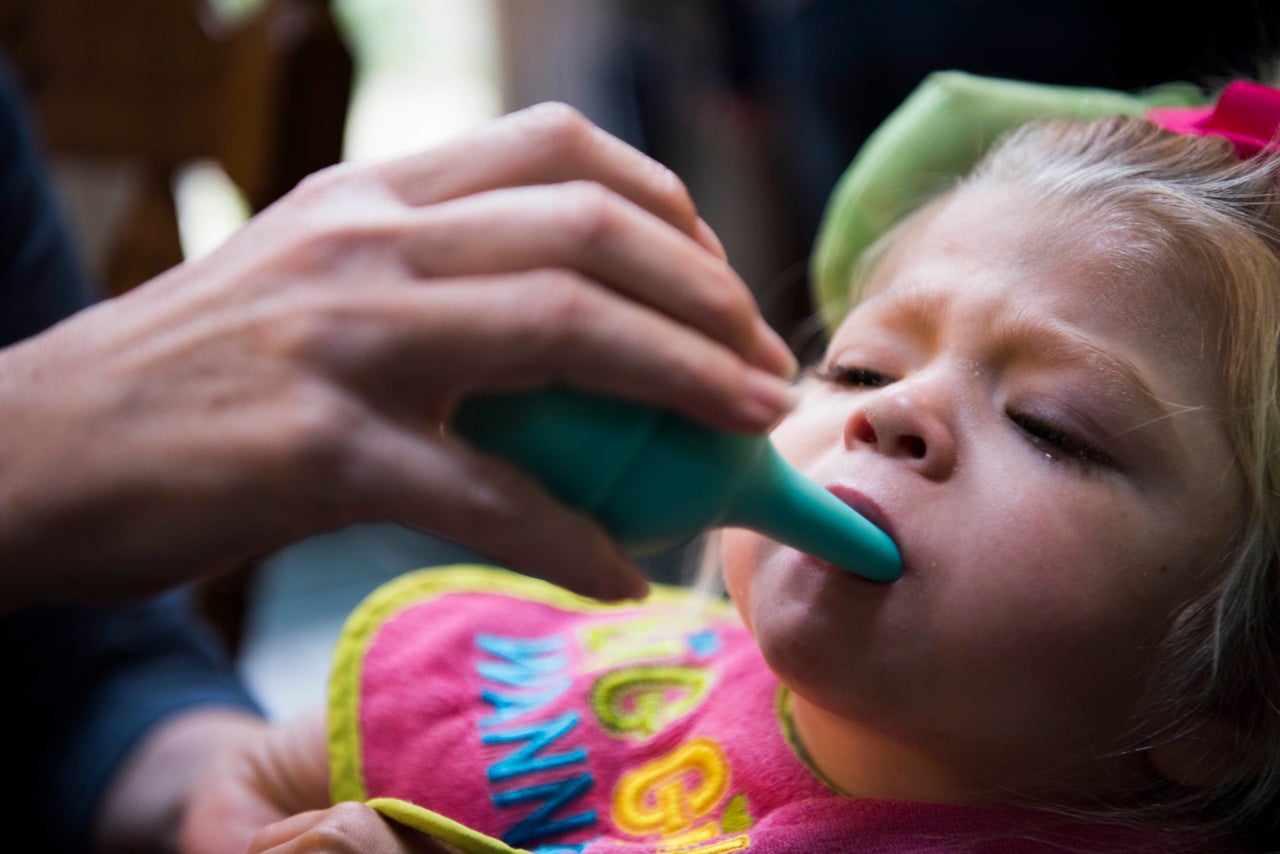
If there’s a constant in Amber’s life these days, it’s the sound of her daughter drowning in her own spit. That ominous rattle can happen at any time ― sometimes up to five times a day.
She, Tom, the nurses or schoolteachers must quickly grab a plastic suction dropper or suction tube to remove the mucus or spit that’s getting stuck in Willow’s throat, because her muscles are no longer strong enough to swallow it.
The worst was when Amber drove alone with Willow in the car and that raspy sound began. The time it took to pull over to the side of the road, unbuckle her seatbelt, race around to the backseat, use the suction device, pull Willow out of her custom car seat and hit her on the back felt like an eternity in slow motion.
It’s in those moments that Amber has pondered the advice given to her by parents of children who have died ― to treasure every moment with her daughter. That every moment is a gift.
“I don’t think it’s a privilege ― it’s a horror show,” she said.
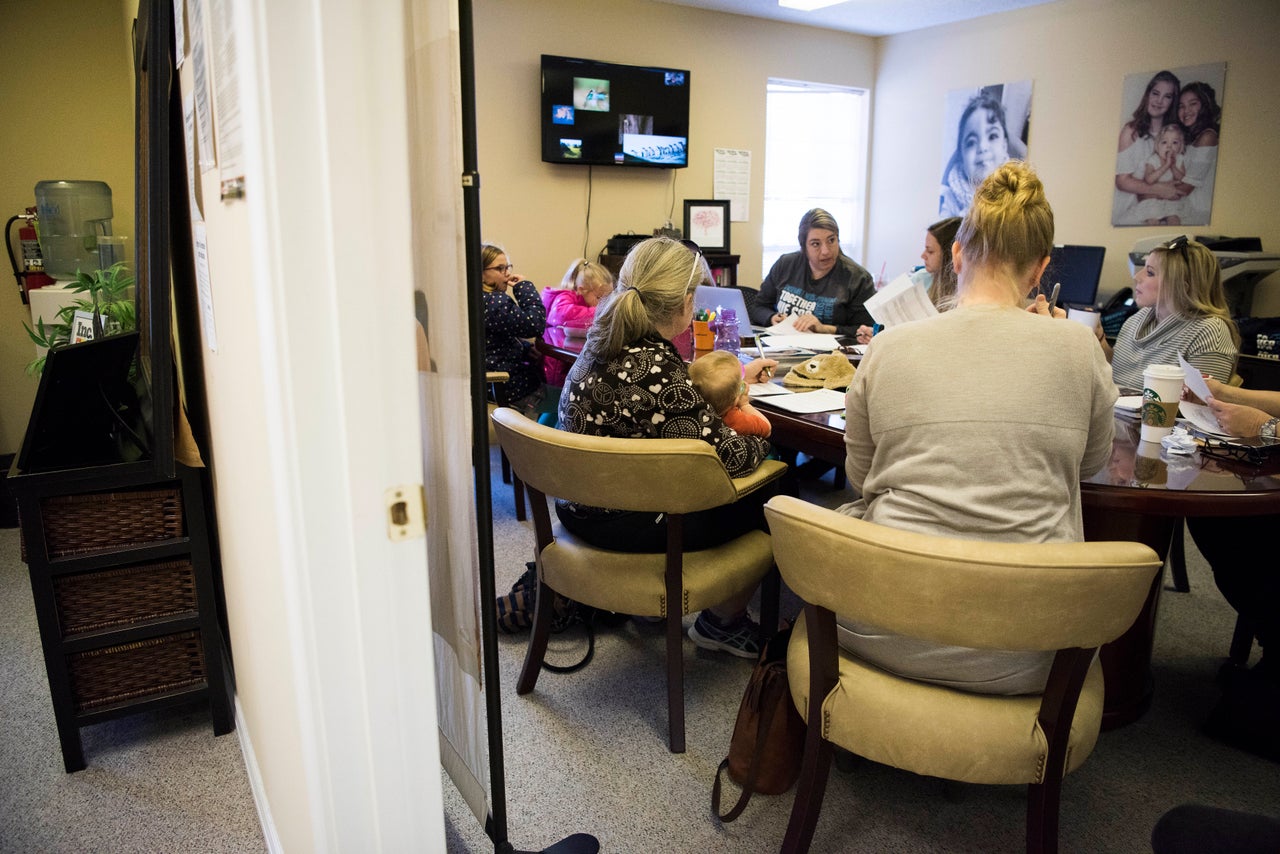
The United MSD Foundation is run out of the office space at Amber’s staffing agency. It has a board of directors, made up mostly of people who have an MSD diagnosis in the family; a scientific advisory board of university researchers who specialize in diseases like MSD; and, finally, Dr. Lars Schlotawa, a Germany-based pediatrician and child neurologist who serves part-time as its medical director and has been involved with MSD research since 2004.
The foundation’s goal is to cure MSD for all, and the strategy is to fund multiple avenues for treatment, including gene therapy, screening for useful drugs and related animal testing. The scientific advisers decide where the money that’s raised should go.
Schlotawa said it was incredibly hard when he was starting out to focus solely on MSD. That was long before Alan Finglas and Amber had essentially created a viable funding structure for MSD research. Schlotawa wasn’t getting opportunities to publish. And obtaining funding grants to cover his work? If only.
“For me, I was a specialist on something that was too rare to really be seen,” he said. “At some point, you have to make a decision: Will I stick to it, direct money from something else to [fund] it? Or do you leave it behind?”
He was forced to table his passion for many years. Even today, without the financial support from Finglas’ and Amber’s foundations, Schlotawa said he wouldn’t be able to run a MSD patient registry and work on a natural disease history, which details what MSD looks like as it progresses in patients. Since the disease is so rare, that history hasn’t been completed yet. Without the fighter parents’ backing, Schlotawa also wouldn’t be pursuing research on drug screens or have been able to persuade one of his colleagues to test drugs for MSD on zebrafish.
One of the top specialists in rare genetic diseases in the U.S., Dr. William Gahl, made a similar point about how the reward system in medical research affects priorities. It is skewed, he said, toward big scientific discoveries rather than treatments.
“The way the academic system works at the NIH and even more so at universities is that advancement occurs from discovery of new findings ― not patient care,” said Gahl, the clinical director of the NIH’s National Human Genome Research Institute. “Patient care provides a salary and money, but your reputation is made on finding new things about a disease or a pathway.”
Which is a problem for kids like Willow. Those European scientists already discovered the genetic mutation for MSD.
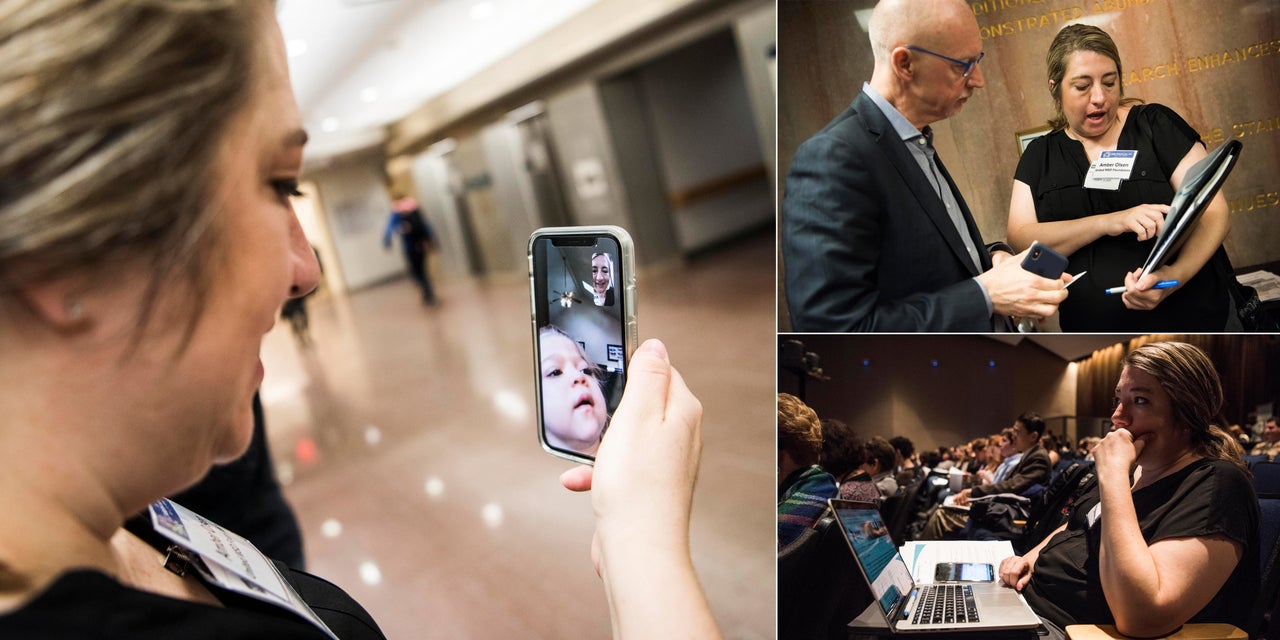
When Amber asks for money, many potential donors balk at the idea of funding an experimental medical treatment, one with no known track record. They think gene therapy sounds like science fiction, according to Brittany Zellhofer, a trained nurse and Amber’s close friend who serves as the United MSD Foundation’s public relations coordinator.
All people can see is a little girl in a wheelchair who can’t communicate. They’d rather buy that child medical equipment or diapers.
They don’t see how much Willow has lost. They don’t see the “On This Day” videos that pop up in her parents’ Facebook feeds reminding them of when their daughter could run. They don’t see Tom getting up every morning and softly singing “Rocket Man” to his daughter, as she does her daily “shakey vest” treatment to try to prevent pneumonia. They don’t see the photos from just two years back when Willow ― and the rest of her family ― looked like different people. And even as Amber tries to explain, they don’t always grasp what she’s attempting to accomplish.
Tom Cannan shared the above video on Facebook on Sept. 18 after it popped up through his Facebook Memories. He wrote: “It’s been two years. My baby willow can no longer walk or move her arms as freely as she does in this video. I’m picking her up from the hospital because she has trouble breathing. Please help me find a treatment for MSD. I do not want another parent to suffer looking at memories of their children.”
Amber doesn’t need to raise funds for another wheelchair. Tom is a retired Navy veteran and his military insurance, TriCare, combined with the Medicaid for which Willow qualifies as a disabled child living at home, takes care of the vast majority of her medical and therapy expenses ― close to a million dollars over the last two years. What Amber needs are people to donate to the United MSD Foundation.
Gahl is not quite as optimistic as Amber about her plan to save Willow ― not this spring or now in October. He knows there are many challenges to developing a treatment on Willow’s timeline. When they meet, he peppers Amber with highly technical questions about the latest progress, pushing back on some of her answers. He isn’t as sure that she can raise the money or get the FDA approvals soon enough for Willow to qualify for a possible clinical trial, given her rapid deterioration.
Still, Gahl takes Amber’s meetings when she makes her yearly trek to the NIH during Rare Disease Week, even though he seldom sees parents outside of NIH clinical trial and research settings. He sits down with her because, as he put it, Amber will keep bothering him to help her until he dies.

When she started this two years ago, Amber, ever practical ― she married Tom in Las Vegas because why make a fuss with a big to-do? ― thought the fundraising would be the easy part. Get 200,000 people to pitch in $5 each and bam, you have a million dollars. Who wouldn’t be swayed by the story of Willow? An adorable girl from a seaside town? She figured they’d be on “Ellen” in no time.
Two years later, she finds herself chasing the next viral moment in a sick marketing campaign for likes that might somehow translate into saving her child.
“We’ve wracked our brains here about how to market it better because it’s really life or death here ― we’re fighting against the time clock,” Amber said. “And I’m like, ‘What am I doing wrong? Why can’t I raise that kind of money here?’”
Amber has gone over what they could be doing differently a zillion times with Brittany. They’ve tried the Facebook fundraisers, the GoFundMe campaigns, the appeal videos. Their latest attempt this summer was a video featuring Willow’s two best friends pleading for a cure with Willow in her chair alongside them.
“This terrible monster is stealing away my friend a little bit at a time,” one girl said, looking straight into the camera.
“It leaves a sick taste in my mouth as we’re using children to get adults to save children, but it’s the same as the Sarah McLachlan save-puppy-dog commercials,” Brittany said. “I wrote the script for this one and was like this feels wrong, but this is what takes off.”
The video has racked up some 113,000 views on Facebook and got a shoutout from Richard Engel, the NBC correspondent whose son Henry has a similar rare genetic disorder, Rett syndrome. Henry has been featured on the “Today” show, in People magazine (twice) and so on.
Brittany was so excited when their video cracked 100,000 views ― but the cash didn’t quite follow. They raised only $5,000.
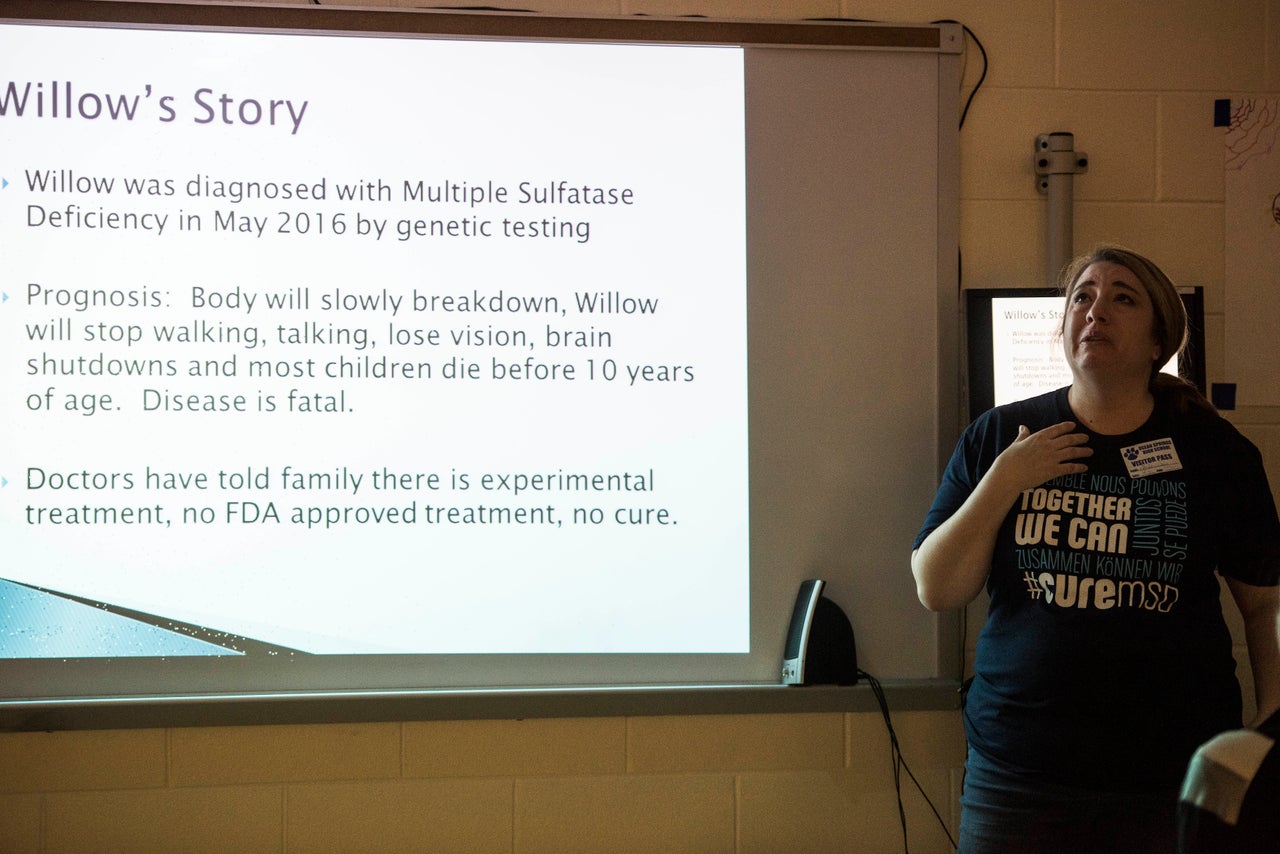
In total, Amber and her team have raised more than $350,000 ― half from online generosity, half from all those fun runs, Rotary Club events and high school fundraisers. Finglas’ foundation in Ireland has raised over $824,000. Seba Ballauz, whose 4-year-old daughter Alma has MSD, has pulled in over $120,000 in Argentina, although with the currency collapse there, that’s worth just $80,000 now.
But not all that money has gone to gene therapy research. And even if they had pooled it all together, it would not have been enough to pay for preliminary tests of gene therapy in mice and then rats, genetic materials manufacturing and the clinical trial. “It’s not OK to just raise $100K,” Gray explained. “These parents have to be thinking about millions of dollars from day one.”
It can be heartbreaking for Amber to dwell on what a few other parents have accomplished. She thinks of the $6 million that Sames raised, in part using PepsiCo grants, to fund Gray’s research into GAN or the $1 million, not $5,000, that Sarkar made off one video.
“I take it so personally,” Amber said. “If I was just more popular, if she had been born to somebody else ― if it would have been better.”
She hasn’t entirely struck out with the rich and famous. She talked billionaire Michael Bloomberg into donating $2,000 after telling him about Willow at the Goldman Sachs 10,000 Small Businesses Conference. Former *NSYNC member Lance Bass, who is a childhood friend of her friend’s cousin, started a Facebook fundraiser for Willow in August after meeting her ― but it’s only raised $470. And there have been some near misses. Amber once managed to get Robin Roberts’ sister, who is from Mississippi, to introduce her to the “Good Morning America” host. While compassionate, Roberts didn’t take up the cause, Amber said. And a personal meet-and-greet with now-retired NBA player Manu Ginóbili resulted in a moving conversation and a signed jersey, but no public promotion on his part.
For a long time, Amber couldn’t even get the local press interested, much less pull off what others have managed with The New Yorker, CBS Evening News, ABC News, CNN, People and Parenting.
Even this story, which took several months to report, has been a source of frustration to Amber. The editorial process has not proceeded on Willow time.
At one point, Amber wondered if the editors were waiting for Willow to die to create a more “complete” narrative arc. The bluntness, the exasperation that MSD has wrought ― life is black and white, her daughter is alive or dead ― seeps into her worldview.
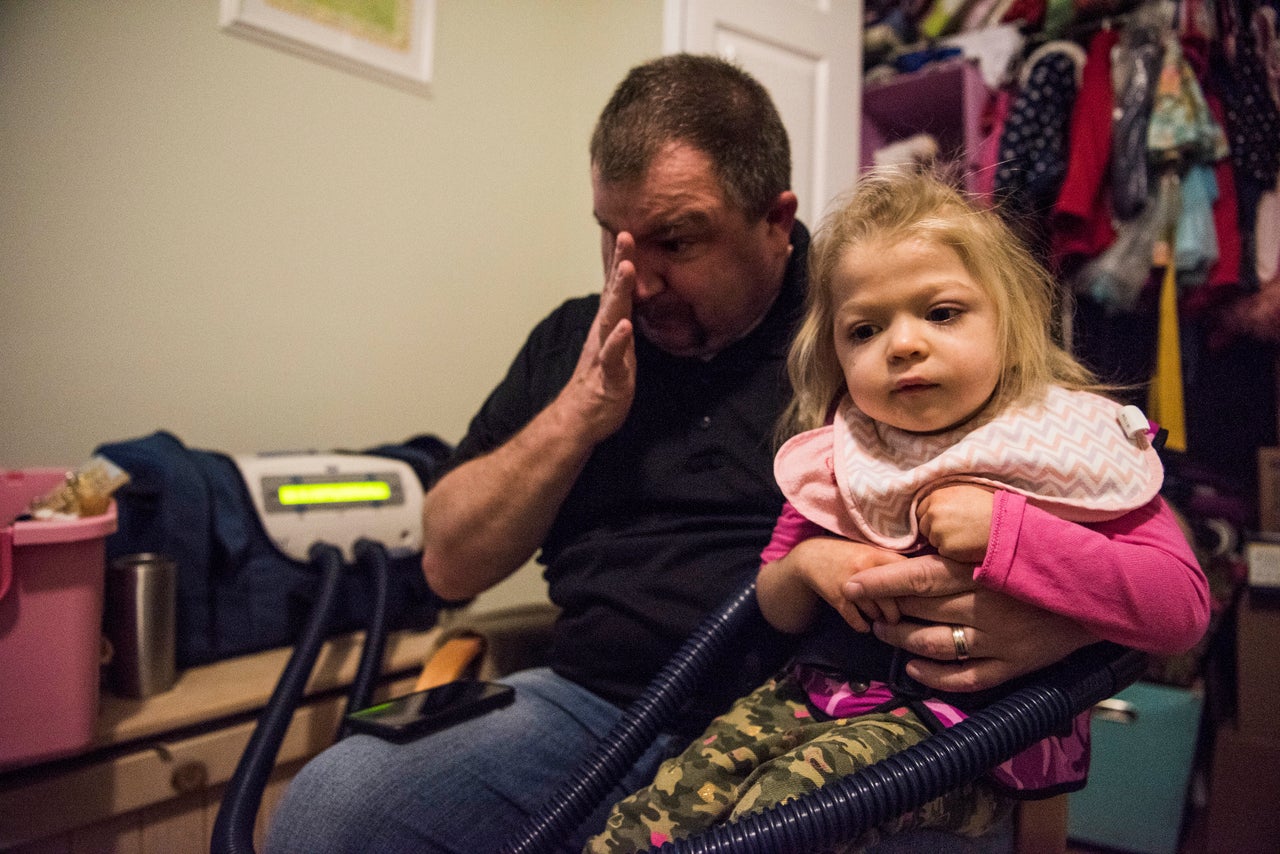
The stress of caring for a dying child and shouldering the burden of her potential salvation isn’t happening in a vacuum. Amber is still the mother of two other daughters, still married to Tom and still the primary breadwinner for their family as a small business owner.
All those roles have taken a hit, leaving her consumed by guilt. It seems like the small things ― finding a homecoming dress, figuring out the swim practice schedule ― are always slipping through the cracks. She feels like the older girls are getting cheated out of their mom’s attention ― “like I’ve got nothing left,” Amber said.
Bonnie Sine, manager of Amber’s staffing agency, noted that the daily struggle has also been very hard on Tom, “who wants to fix things and can’t fix things.” Amber sees a therapist about the disease that’s overtaken their lives, but Tom won’t go.
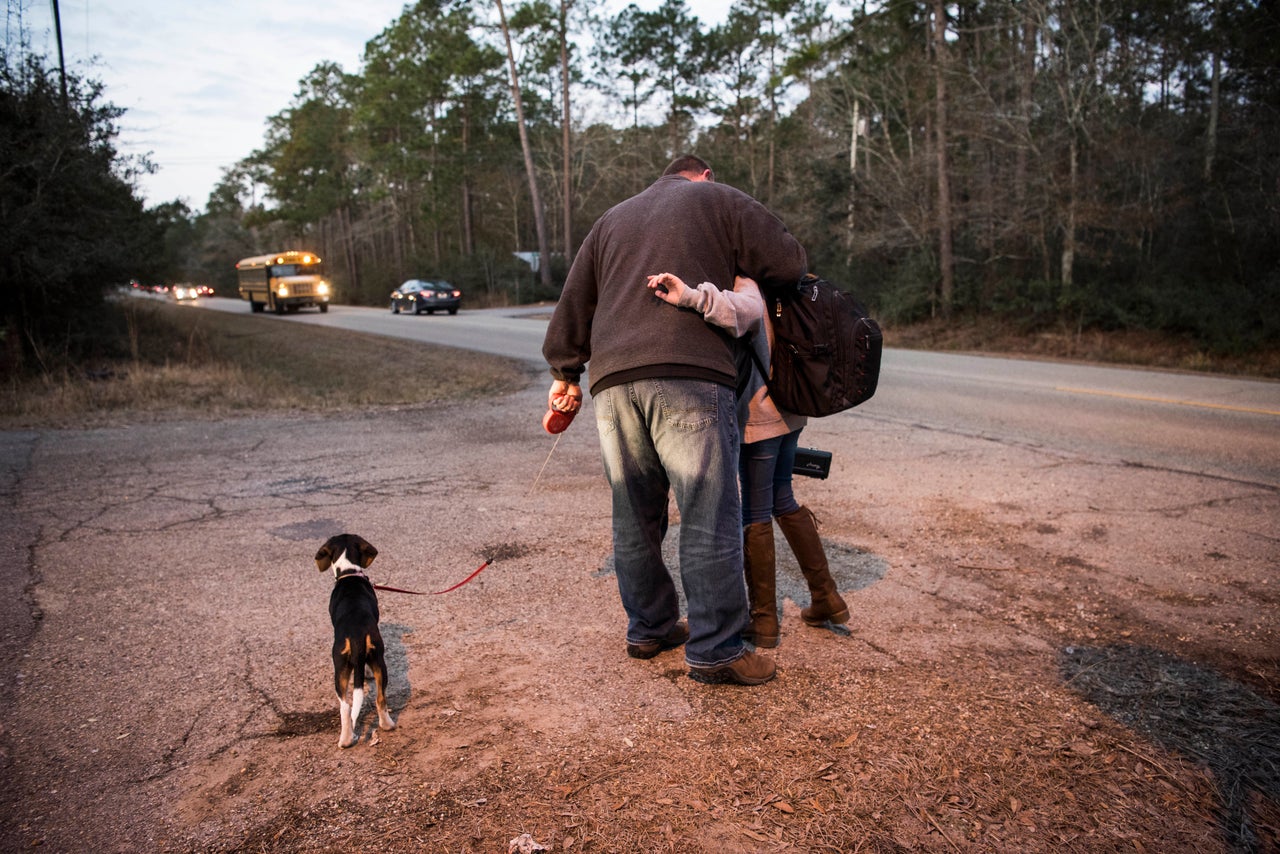
They are a team ― she focuses on battling MSD, running the foundation, raising money and managing Willow’s treatments; he focuses on running the household, cooking dinner, managing the older girls’ schedules, taking community college classes under the GI Bill, operating his own IT services business and holding down the fort during her many trips away. But she sometimes feels like he could do more for the cause, and he sometimes feels like she devotes too much of herself to it. “There she goes on the phone again” is a comment Tom makes often.
As for her agency, she’s essentially deputized Sine to run things since the diagnosis. With all her absenteeism, Amber jokes that she’d fire herself, and business has fallen off. The family’s income plummeted by more than half the first year after Willow’s diagnosis and Amber expects it to continue dropping. They’ve gone from the upper 13 percent by income of folks in the Gulfport-Biloxi-Pascagoula metropolitan area to the very middle, based on Pew Research’s income calculator.
There are never enough hours. The family gave up their new beagle puppy, Anna, after six months because they couldn’t train and care for her properly. Amber doesn’t get to Crossfit to burn off steam anymore; she and Tom each put on more than 50 pounds in the last two years.
One of the few things she does to escape is watch the reality TV show “Addicted.” And even that terrifies her because a lot of people on the show develop an addiction after a traumatic event ― like the death of a sister.

Traveling all the time ― from flying internationally for disease conferences to heading to Capitol Hill to lobby Congress ― is Amber’s current reality. She’s often gone a week or two out of each month. Before she left town in February for a trip to Washington, Jenna asked her, “You’re leaving again?”
Amber was headed to Rare Disease Week, the annual federal lobbying push organized by Rare Disease Legislative Advocates. Over the course of the week, people from 300 or so advocacy groups go to Washington to call for more funding, primarily for the NIH.
On the second day of the event this year, Amber didn’t wear the blue-and-gray MSD T-shirt she practically lives in now. Instead, she picked out a silk zebra-print blouse ― the zebra represents rare diseases because no two zebras have the exact same stripes ― and black slacks. Wearing much more makeup than usual, she headed to Congress.
With a videographer who is working on a documentary about the family, a photographer and a reporter in tow, she entered the white marble halls. She knows what everyone thinks of all the parents descending upon them. A Capitol Hill staffer once told her they’d nicknamed Rare Disease Week the “Trail of Tears”: All these parents come in, they cry that their child is dying, and the staffers don’t have anything for them. Last year, Amber knows that she got too emotional and “it made people uncomfortable,” so this year, she intends to do it differently.
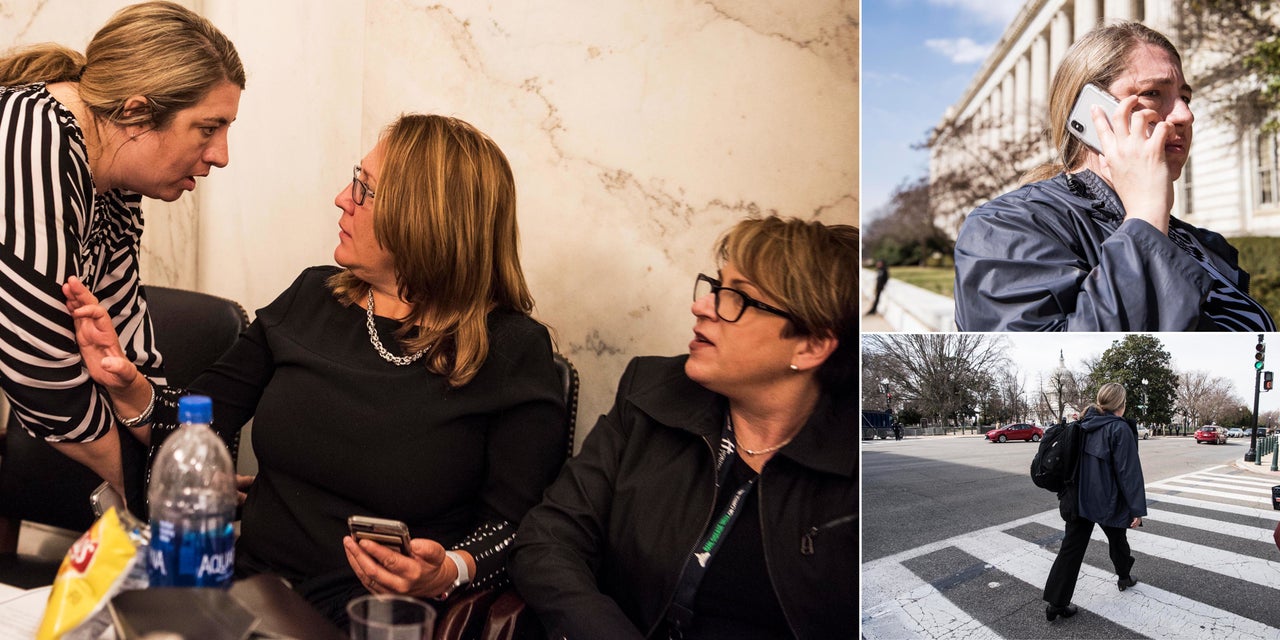
For the most part, she gets through her spiel without crying. Over and over and over again, she talks about how she’s racing the clock to save her child, and can’t someone, anyone help her?
The last time she met with her congressman, Rep. Steven Palazzo (R-Miss.), she thought to lay it out in terms a politician would care about: 1 in 10 of his constituents have a rare disease. There are votes there.
During her first forays into these rare disease gatherings, she often wondered, “How do I find someone to help us? Do I need to walk up and down the halls with Willow’s picture?”
Now she knows that’s exactly what she needs to do. She and the other parents come armed with business cards printed with their child’s face, disease and foundation info. Tiina Urv, director of the Extramural Research Program in the NIH’s Office of Rare Diseases Research, said she has a whole stack of these business cards on her desk.
“The hardest part about the way this is built right now is we are expected to do this. I’m the parent of a sick child,” Amber said. “It’s a very unfair system and it’s leaving the most vulnerable behind. … There’s got to be a better way.”
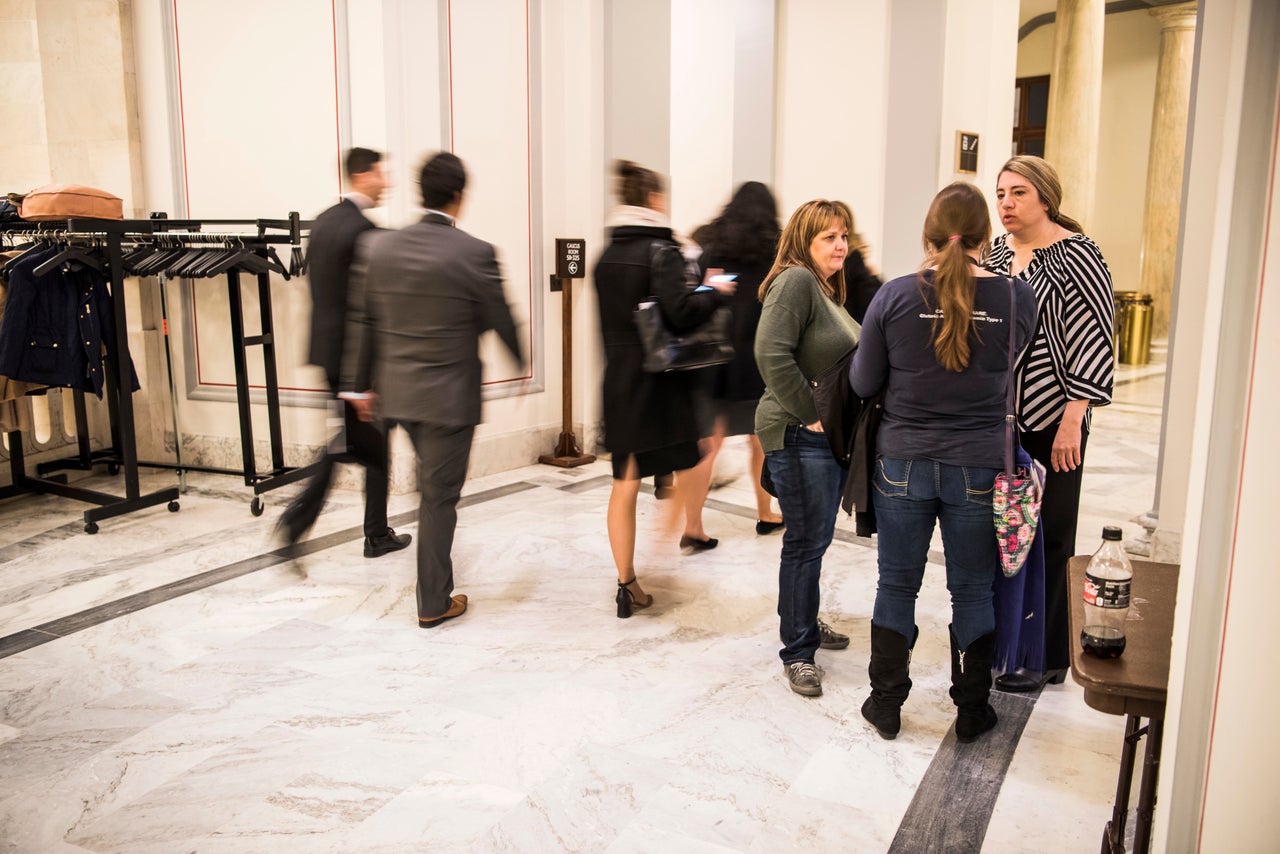
By all measures but one, Amber’s efforts to raise awareness and develop a treatment strategy for Willow have been a success. Everyone Amber met at the NIH and on Capitol Hill this year sounded impressed with her progress. Several medical professionals told HuffPost they can hardly believe what Amber has accomplished.
“The timeline you’re on is Willow’s timeline, so it feels like there’s this urgency,” Dr. Brian Kirmse told Amber in March during her daughter’s appointment at the University of Mississippi Medical Center in Jackson. The metabolic geneticist gently stretched Willow’s arms and legs to check her tightening muscles. “But in a science timeline, you guys are moving at breakneck speed.”
“Amber is incredible,” Kirmse told HuffPost. “I’ve never seen a parent get devastating news, assimilate it and synthesize it into an advocacy effort at the treatment level. I’m rooting for her and Willow every day.”
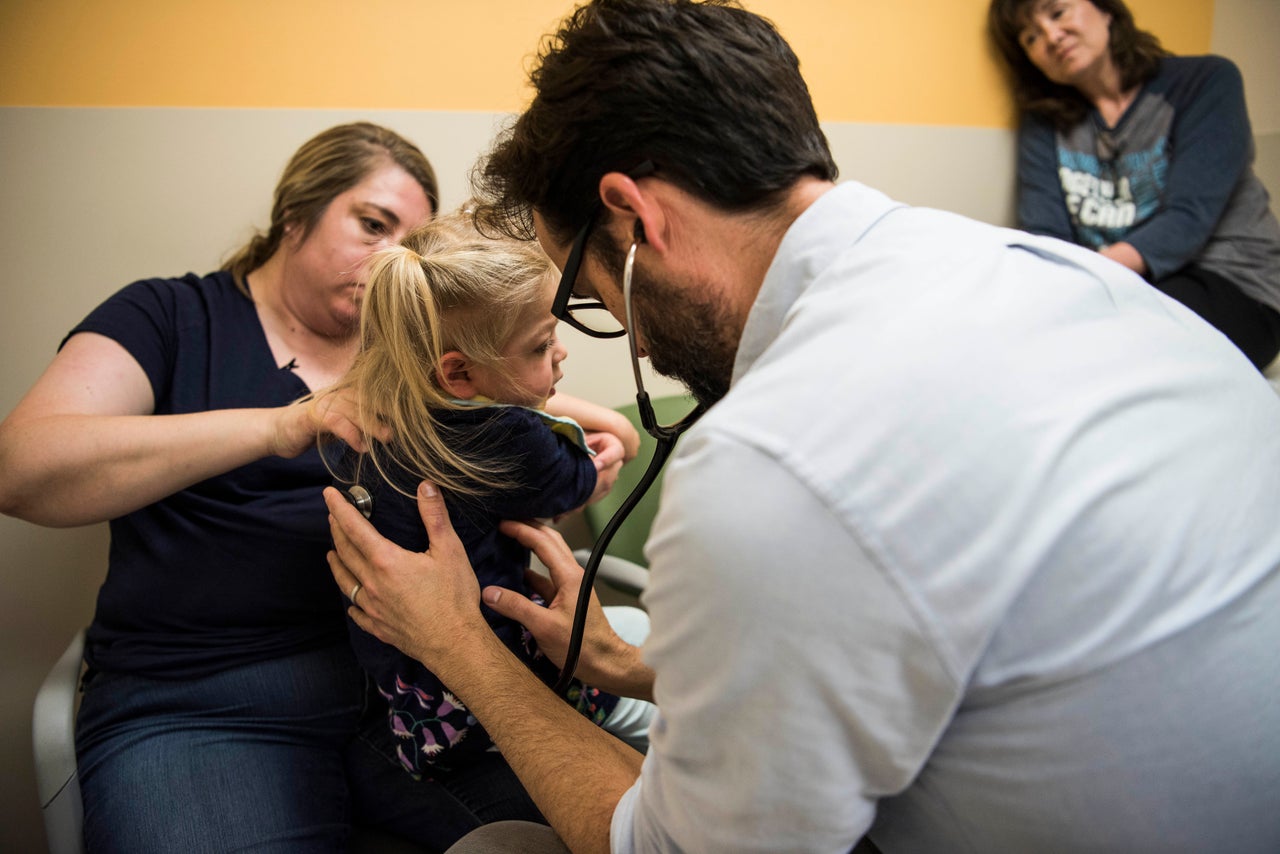
Still, the physicians who see Willow and those who work at the NIH sound a cautious note ― in part because they know, as does Amber, that all this progress may not come fast enough. None of them can answer her biggest question. Will Willow be too far gone by the time the gene therapy, which isn’t guaranteed to work, is ready? Could she sacrifice everything and not have it help Willow?
Gray is blunt.
“I’m in this situation a lot and I’m always upfront with parents: We can do the best for your child, but I’m also in this for all the future Willows,” he said. “And if I’m going to invest my effort into this ― and people like Amber investing herself in it ― they have to be doing it for everyone else’s kids as well as their own.”
Even if an MSD treatment doesn’t come in time to save her own daughter, Amber has vowed that she is going to see this through.
But she and Tom haven’t signed that DNR order for Willow.
“I can see where we will constantly be at a crossroads of what to decide,” she said. There are, she added, “no good choices.”
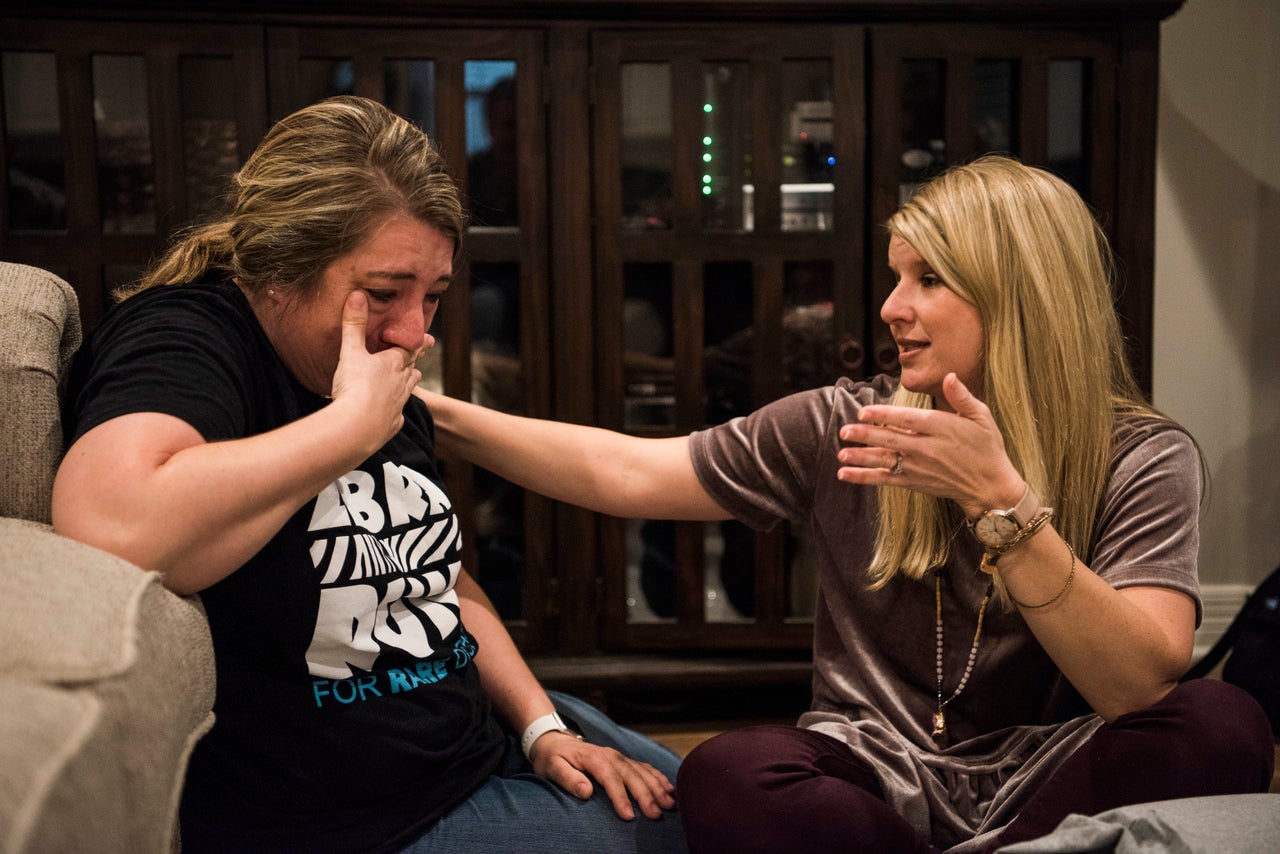
This summer, suddenly, Willow’s steep and steady decline plateaued. She seemed to be doing better neurologically, her doctors said, albeit worse physically.
At the same time, Amber got a significant bit of traction: The first lady of Mississippi, Deborah Bryant, took an interest in Willow after several attempts at contact. News crews started to respond to the family’s requests. On Oct. 6, some showed up at Willow’s fifth birthday celebration, where Bryant held her for most of the event.
And with that, Amber’s strength was renewed. She has lost 20 pounds since the summer and looks five years younger. Even a recent bout with pneumonia for Willow, which led to a collapsed lung, seemed fightable.
Most importantly, at the end of September, Amber received news that has left her in shock: An anonymous donor agreed to fund the $1.6 million needed for Gray’s materials and manufacturing of the gene therapy if Amber and the other MSD parents raise the additional $1 million to fund the clinical trial. She has no idea who or what or how or why, but she’s just so thankful.

Now, she said, they have a clear timeline. Gray can proceed with his virus vector work while they find the money for a potential clinical trial next year. Yet the system is still broken.
“I don’t want people to look at my story and say, ‘Look at this nice little family, look what they did,’” Amber said.
She doesn’t know what to tell all the other moms just like her who ask, over and over again, how they can do the same thing.
Still, if the timeline holds, if Willow qualifies for the clinical trial and hasn’t deteriorated too much further, she could possibly be treated next year. And if the gene therapy works, that means Willow’s regression would be halted. She most likely wouldn’t talk or get out of the wheelchair. But Amber just might have saved her life.
CORRECTION: Rare Disease Week is organized by Rare Disease Legislative Advocates, a program of the EveryLife Foundation for Rare Diseases ― not by NORD, the National Organization for Rare Disorders. NORD sponsors Rare Disease Day.
